
Absalon was a Danish statesman and prelate of the Catholic Church who served as the bishop of Roskilde from 1158 to 1192 and archbishop of Lund from 1178 until his death. He was the foremost politician and church father of Denmark in the second half of the 12th century, and was the closest advisor of King Valdemar I of Denmark. He was a key figure in the Danish policies of territorial expansion in the Baltic Sea, Europeanization in close relationship with the Holy See, and reform in the relation between the Church and the public. He combined the ideals of Gregorian Reform with loyal support of a strong monarchical power.
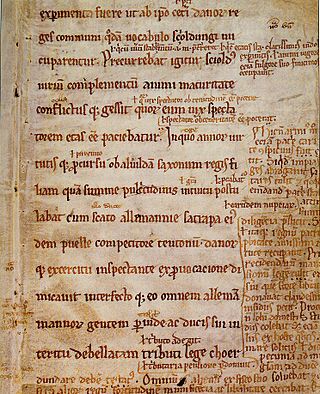
Gesta Danorum is a patriotic work of Danish history, by the 12th-century author Saxo Grammaticus. It is the most ambitious literary undertaking of medieval Denmark and is an essential source for the nation's early history. It is also one of the oldest known written documents about the history of Estonia and Latvia.
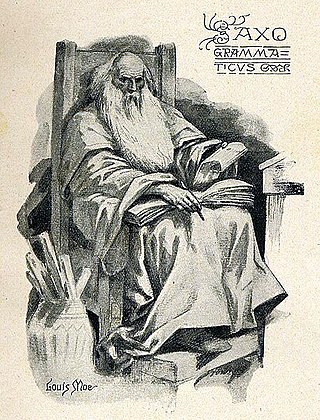
Saxo Grammaticus, also known as Saxo cognomine Longus, was a Danish historian, theologian and author. He is thought to have been a clerk or secretary to Absalon, Archbishop of Lund, the main advisor to Valdemar I of Denmark. He is the author of the Gesta Danorum, the first full history of Denmark, from which the legend of Amleth would come to inspire the story of Hamlet by Shakespeare.

The Vordingborg Castle ruins are located in the town of Vordingborg, Denmark and are the town's most famous attraction.

The history of Copenhagen dates back to the first settlement at the site in the 11th century. From the middle of the 12th century it grew in importance after coming into the possession of Bishop Absalon, and the city was fortified with a stone wall during the 13th century. The harbour and the excellent possibilities for herring fishing contributed to Copenhagen's growth and development into an important trading centre. It was repeatedly attacked by the Hanseatic League as the Germans became aware of its expansion. In 1254, it received its charter as a city under Bishop Jakob Erlandsen.

Christiansborg Palace is a palace and government building on the islet of Slotsholmen in central Copenhagen, Denmark. It is the seat of the Danish Parliament, the Danish Prime Minister's Office, and the Supreme Court of Denmark. Also, several parts of the palace are used by the Danish monarch, including the Royal Reception Rooms, the Palace Chapel and the Royal Stables.
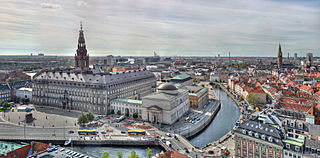
Slotsholmen is an island in the harbour of Copenhagen, Denmark, and part of Copenhagen Inner City. The name is taken from the successive castles and palaces located on the island since Bishop Absalon constructed the city's first castle on the island in 1167 at the site where Christiansborg Palace lies today.

Indre By, also known as Copenhagen Center or K or Downtown Copenhagen, is an administrative district (bydel) in central Copenhagen, the capital of Denmark. It covers an area of 4.65 square kilometres (1.80 sq mi), has a population of 26,223, and a population density of 5,638 per km2.

Anders Sunesen was a Danish archbishop of Lund, Scania, from 21 March 1201, at the death of Absalon, to his own death in 1228.
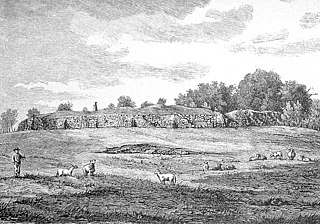
Søborg Castle is a ruined castle south of Gilleleje in North Zealand, Denmark. It was one of the strongest castles in Denmark and was also used as a prison. It was inhabited until the Count's Feud in 1535, when it is speculated that it was destroyed. In 1577, the feudal tenant was granted permission to use the ruins as a quarry.

The fortifications of Copenhagen is the broad name for the rings of fortifications surrounding the city of Copenhagen. They can be classified historically as follows:

Copenhagen Castle was a castle on the islet of Slotsholmen in central Copenhagen, Denmark. It was built in the late 14th century and was located at the site of the current Christiansborg Palace.
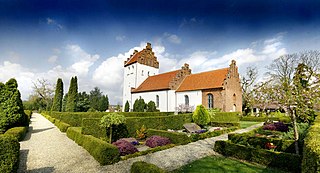
Skjalm Hvide, was the Earl of Zealand in Denmark in the end of the Viking Age (793–1066) and up to his death. Skjalm's father was Toke Trylle, whose father was Slag, based on Absalon, a medieval account scanned, translated and published by Google.

The former Diocese of Roskilde was a diocese within the Roman-Catholic Church which was established in Denmark some time before 1022. The diocese was dissolved with the Reformation of Denmark and replaced by the Protestant Diocese of Zealand in 1537.

The equestrian statue of Absalon on Højbro Plads in Copenhagen was unveiled in 1902 to mark the 700th anniversary of the death of Bishop Absalon, the city's legendary founder.

Asser Rig was a jarl and chieftain from Zealand, Denmark, a son of Skjalm Hvide and Signe Asbjørnsdatter. They are sometimes referred to as Asser Rig Skjalmsen Hvide.
Wetheman or Vedeman was a Danish nobleman who in 1151 or 1152 founded a lay confraternity in Roskilde to help fight the pagan Wends. A layman, he was its first commander and led the defence of the coast from Wendish pirates. He also played a prominent role in the crusades and wars of King Valdemar I and Bishop Absalon of Roskilde. In 1164, the king put him in charge of the town of Wolgast after its capture.
Events from the 12th century in Denmark.
Events from the 13th century in Denmark.

















